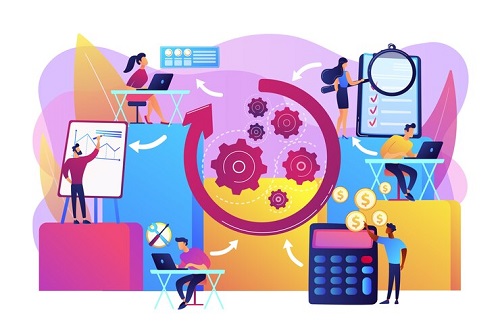In today’s rapidly evolving digital landscape, keeping up with technological advancements is not just a choice but a necessity for businesses aiming to stay competitive. However, navigating tech upgrades can be a daunting task. With the right approach, businesses can ensure that their technology investments align with their strategic goals and deliver tangible benefits. This guide will walk you through the key considerations for a successful tech upgrade journey.
Understanding Your Business Needs
Before diving into the world of new technology, it’s crucial to have a clear understanding of your business needs. Start by evaluating your current technology infrastructure. Identify any gaps or inefficiencies that might be hindering your business operations. This assessment will help you pinpoint the areas where technology upgrades can have the most significant impact.
Next, determine the specific business goals that your technology upgrades should support. Are you looking to improve customer service, enhance productivity, or expand into new markets? Clearly defined goals will guide your technology choices and ensure that they contribute to your overall business strategy.
Finally, consider the scalability of the technology you plan to adopt. As your business grows, your technology needs will evolve. Opt for solutions that can accommodate future growth without requiring frequent overhauls.
Assessing Technological Trends
Staying informed about technological trends is essential for making informed decisions. Begin by researching emerging technologies relevant to your industry. Whether it’s artificial intelligence, cloud computing, or the Internet of Things, understanding these trends will help you identify opportunities for innovation.
Analyzing competitor technology strategies can also provide valuable insights. Look at what technologies your competitors are adopting and assess their outcomes. This analysis can help you avoid potential pitfalls and capitalize on successful strategies.
Additionally, be mindful of the technology lifecycle and obsolescence risks. Technology evolves rapidly, and what is cutting-edge today may become obsolete tomorrow. Plan for regular updates and upgrades to keep your systems current and efficient.
Budgeting and Cost Analysis
Budgeting is a critical aspect of any tech upgrade. Begin by outlining the total cost of ownership, which includes the initial investment as well as ongoing maintenance and support costs. This comprehensive view will help you avoid unexpected expenses down the line.
Consider the potential cost savings and return on investment (ROI) that technology upgrades can offer. Improved efficiency, reduced downtime, and enhanced customer satisfaction are just a few of the benefits that can translate into financial gains.
Explore financing options and potential partnerships to ease the financial burden of technology investments. Leasing, vendor financing, and strategic alliances can provide the flexibility needed to implement upgrades without straining your budget.
Evaluating Vendor and Solution Options
Choosing the right vendor and technology solution is crucial for a successful upgrade. Start by identifying reputable vendors with a proven track record in your industry. A vendor’s experience and expertise can significantly impact the success of your technology implementation.
Compare the features, benefits, and limitations of different technology solutions. Look for solutions that align with your business needs and offer the best value for your investment. Additionally, assess the level of customer support and training provided by vendors. Comprehensive support can ease the transition and ensure that your team can effectively utilize the new technology.
Implementing and Integrating New Technology
A well-structured implementation plan is vital for minimizing disruptions during a tech upgrade. Develop a detailed plan with timelines and milestones to keep the project on track. Ensure compatibility with existing systems and processes to avoid integration issues.
Plan for data migration and system testing to ensure that the new technology functions seamlessly within your existing infrastructure. Thorough testing can help identify potential issues early, reducing the risk of downtime and data loss.
Training and Change Management
Successful technology adoption requires effective training and change management strategies. Create a comprehensive training program to equip employees with the skills they need to use the new technology confidently. Tailor the training to different user groups to address their specific needs and concerns.
Communication is key to gaining buy-in from stakeholders. Clearly articulate the benefits of the technology upgrade and how it aligns with the organization’s goals. Address any concerns and provide a platform for feedback to foster a positive attitude toward the change.
Develop strategies to manage resistance and ensure smooth adoption. Change can be challenging, but with the right support and encouragement, employees can embrace new technology and contribute to its success.
Monitoring and Continuous Improvement
The journey doesn’t end with the implementation of new technology. Set up metrics and key performance indicators (KPIs) to measure the impact of the upgrades. Regularly review technology performance and gather user feedback to identify areas for improvement.
Plan for future upgrades and technology refresh cycles to maintain competitiveness. Technology is ever-evolving, and staying ahead of the curve requires continuous investment in innovation and improvement.
Navigating tech upgrades may seem complex, but with careful planning and execution, businesses can harness the power of technology to drive growth and success. By understanding your business needs, staying informed about trends, and prioritizing training and change management, you can ensure that your technology investments deliver lasting value.



